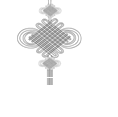题目内容
Every spring, the cherry trees in Washington, DC take bloom(花), beginning one of the country’s loveliest celebrations, the National Cherry Blossom Festival (March 17-April 15). Book your trip now to see this lively display of pink and white in this city full of history!
Washington, DC Cherry Blossom In-Depth tour
Price: $45
Available: Mar 25- Apr 15
Period: 1Day
Highlights: Visit Washington, DC; experience the peak(高峰) period of cherry blossom (April 8-12)
Route: Guests would start to celebrate the National Cherry Blossom Festival and discover the beauty of cherry blossoms. Next, we will begin our sightseeing city tour including Lincoln Memorial, White House, US Capitol, Madam Tussauds Wax Museum, Washington Monument and International Spy Museum. Then visit the Jefferson Memorial, the best location to view the cherry blossoms. Finally, guests may board a Potomac River cruise to see the city from the water. Then tour ends.
Price Include: Ground Transportation
Service fee for the tour guide: $10/person
Admission Fees(入场费):
Destination(目的地) | Adult | Child | Senior |
International Spy Museum (Optional) | $21.95 | $14.95 (3-12 yrs) | $19.95 (Over 65 yrs) |
Madame Tussauds Wax Museum (Optional) | $23 | $17 (3-12 yrs) | $20 (Over 65 yrs) |
Potomac River Cruise (Optional) | $26 | $18 (3-12 yrs) | $23 (Over 65 yrs) |
Note: if you would like to join in the optional(可选择的) activities, please pay the fee in cash(现金) to the tour guide. You cannot buy the tickets on your own or use City Passes. The tour guide will arrange the tickets for the group.
1.On March 25, tourists can enjoy ______.
A.the cherry blossoms in full bloom B.the anniversary celebration of the gift of trees
C.a discounted tour of a city foil of history D.the National Cherry Blossom Festival
2.The tour covers ______ tourist spots without admission fees.
A.four B.five C.seven D.eight
3.Tourists are supposed to ______.
A.pay the service fee for the tour guide B.take care of the ground transportation
C.show the City Pass at the ticket office D.choose at least one optional destination
4.It costs ______ for you and your grandpa (aged 67) to go on the tour, with the wax museum included.
A.$156 B.$143 C.$153 D.$108


